Italian Renaissance Engraved and Gilded Steel Scribe’s Manuscript Knife
A Rare Italian Renaissance Engraved and Gilded Steel Scribe’s Manuscript Knife the Long Ivory Handle Carved with a Lion’s Head the Elongated Blade with an Armorial and to the Reverse a Nobleman in Fashionable Attire
Circa 1615 - 1630
Size: 37cm long - 14½ ins long / 39cm high - 15¼ ins high (with base)
cf: Michael Finlay; ‘Western Writing Implements of the Age of the Quill Pen’ Plains Books 1990; ‘The Scribe’s Knife: A Chronology of the Pen Knife’ no. 74 Circa 1615 - 1630 for an illustration of this shape
Circa 1615 - 1630
Size: 37cm long - 14½ ins long / 39cm high - 15¼ ins high (with base)
cf: Michael Finlay; ‘Western Writing Implements of the Age of the Quill Pen’ Plains Books 1990; ‘The Scribe’s Knife: A Chronology of the Pen Knife’ no. 74 Circa 1615 - 1630 for an illustration of this shape
A Rare Italian Renaissance Engraved and Gilded Steel Scribe’s Manuscript Knife the Long Ivory Handle Carved with a Lion’s Head the Elongated Blade with an Armorial and to the Reverse a Nobleman in Fashionable Attire
Circa 1615 - 1630
Size: 37cm long - 14½ ins long / 39cm high - 15¼ ins high (with base)
Circa 1615 - 1630
Size: 37cm long - 14½ ins long / 39cm high - 15¼ ins high (with base)
Every medieval European Christian monastery had a scriptorium ‘a place for writing’, a room devoted to the writing, copying and illuminating of manuscripts mostly carried out by monastic scribes. Writing was a skill that was difficult to learn and to become a Master Scribe took years of experience and consequently was a highly valued vocation. Their tools of the trade such as these knives were often proudly displayed, and were used to sharpen quills, scrape away mistakes, and hold the parchment in place whilst writing. Erasing mistakes by scraping the ink off the page was a painstaking job as it was difficult to achieve without ruining a piece of parchment. Some pagan manuscripts were reused for writing new biblical texts because of the high cost of the material. The old ink was scrapped off with a scribe’s knife and written over to create a ‘palimpsest’, Greek for ‘scraped again’. Occasionally a scribe would rent his frustration in the margins of a manuscript, one such note reads: ‘A curse on thee, O Pen’. A good scribe’s knife was therefore indispensable.
Ex Private UK collection
cf: Michael Finlay; ‘Western Writing Implements of the Age of the Quill Pen’ Plains Books 1990; ‘The Scribe’s Knife: A Chronology of the Pen Knife’ no. 74 Circa 1615 - 1630 for an illustration of this shape
cf: Michael Finlay; ‘Western Writing Implements of the Age of the Quill Pen’ Plains Books 1990; ‘The Scribe’s Knife: A Chronology of the Pen Knife’ no. 74 Circa 1615 - 1630 for an illustration of this shape
Italian Renaissance Engraved and Gilded Steel Scribe’s Manuscript Knife
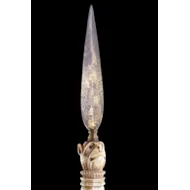
SOLD
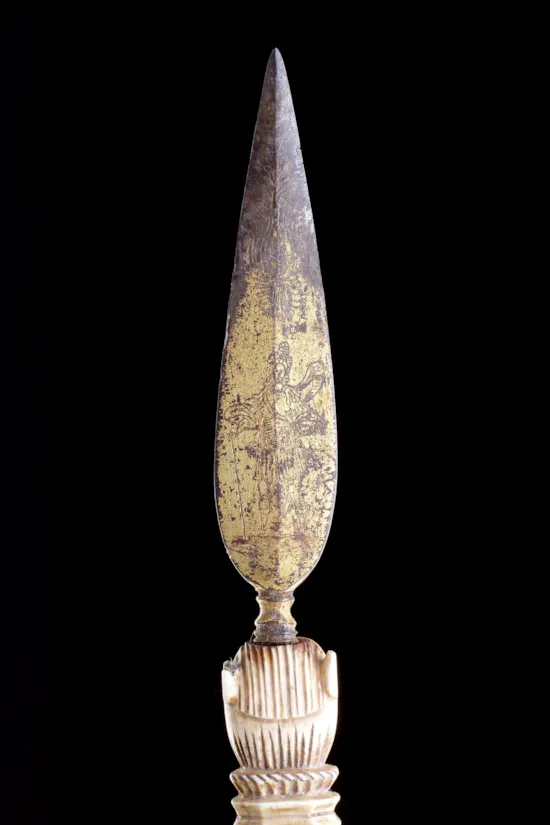
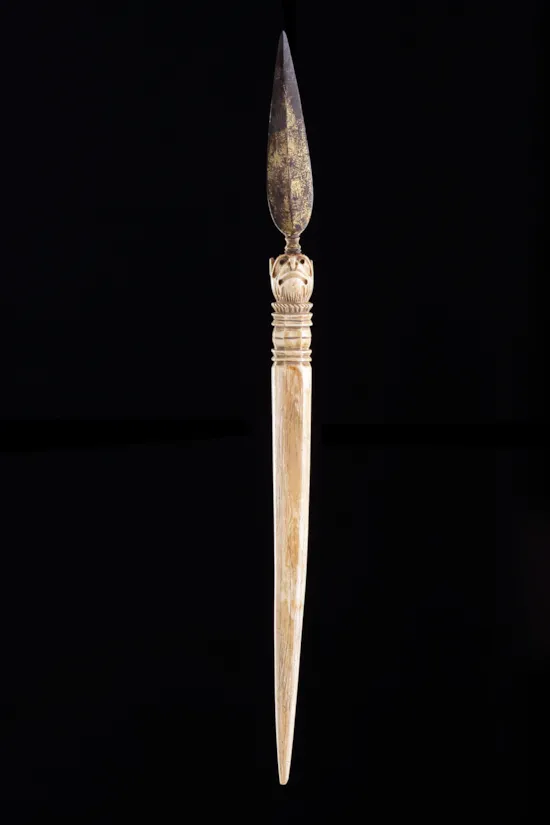
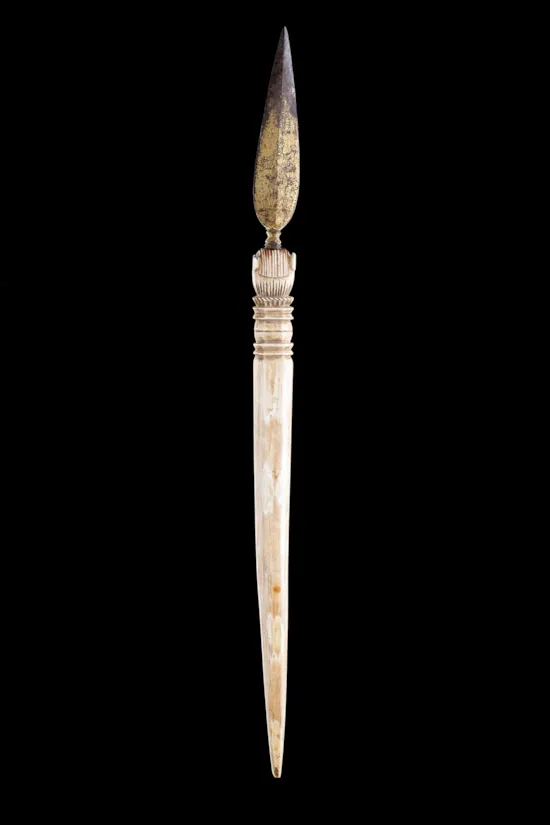
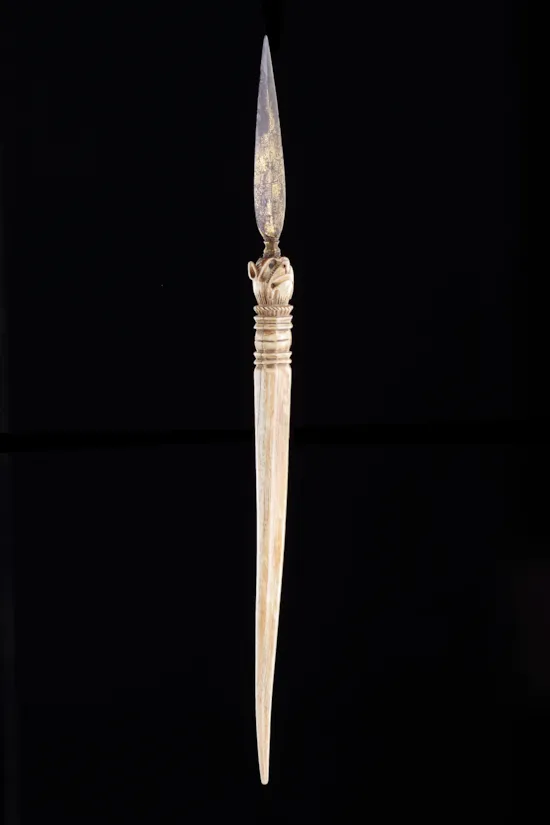
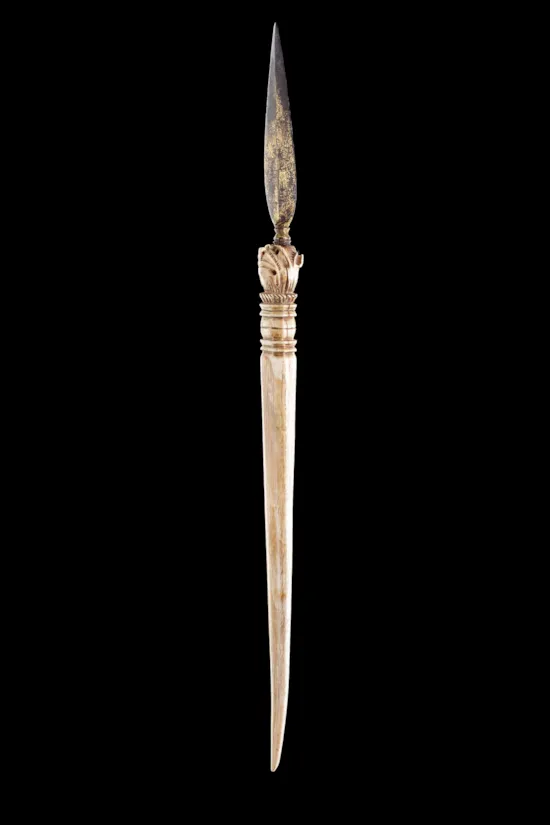
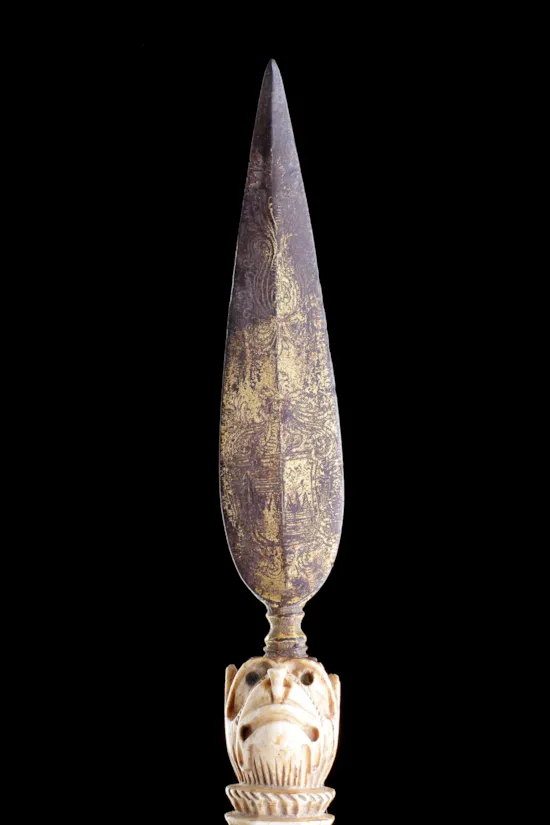
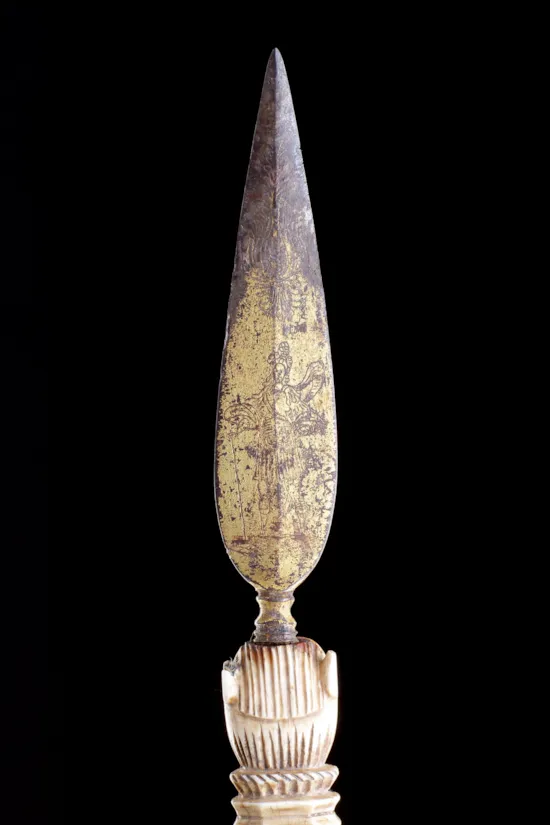
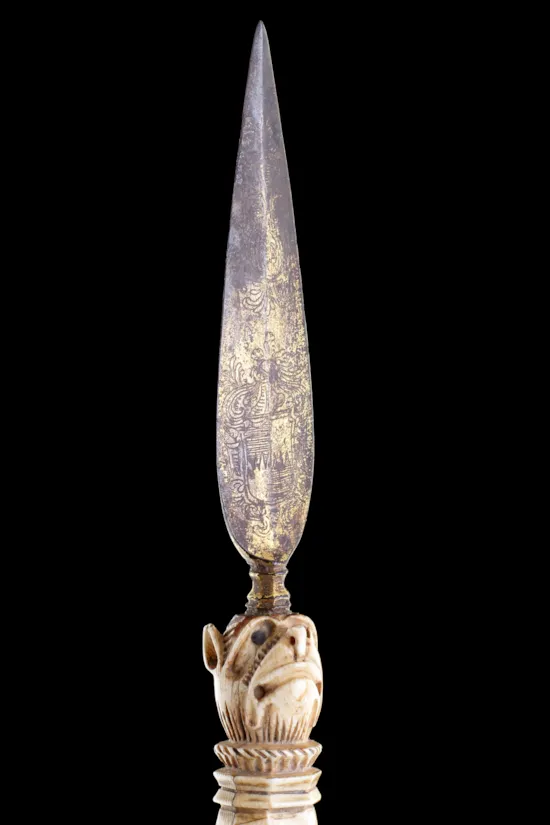
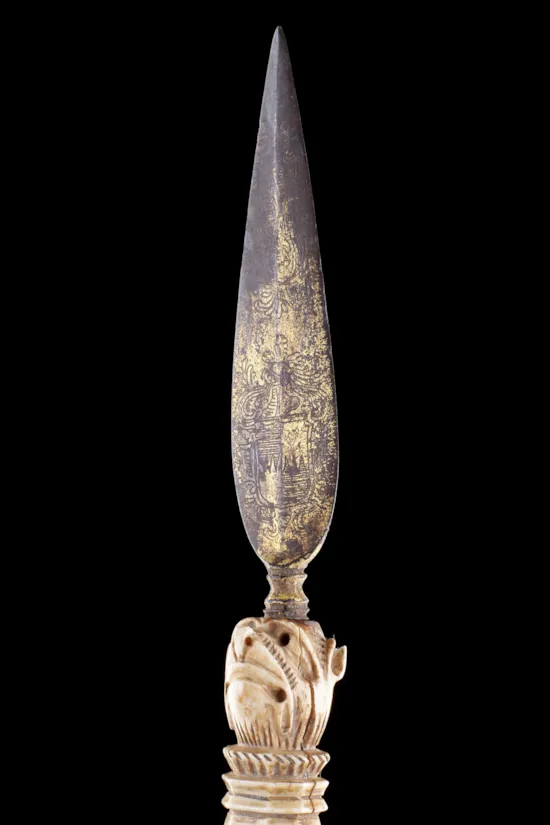
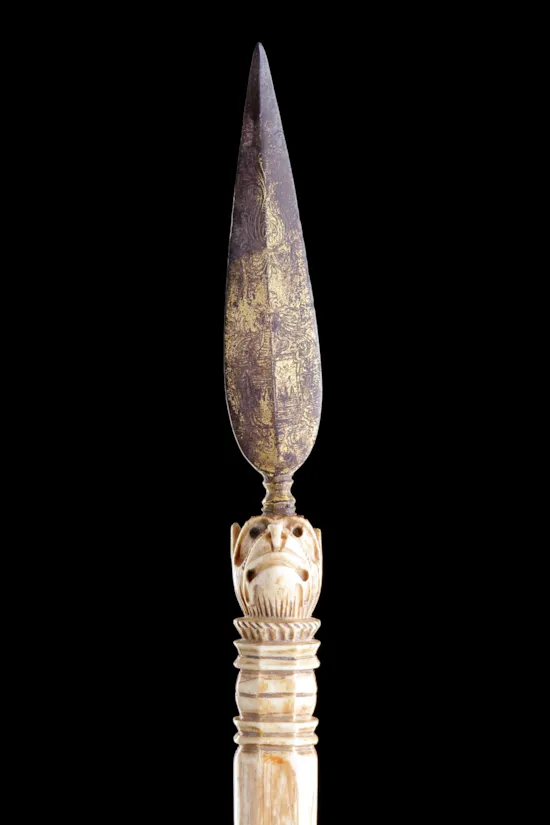










YOU MAY ALSO LIKE

